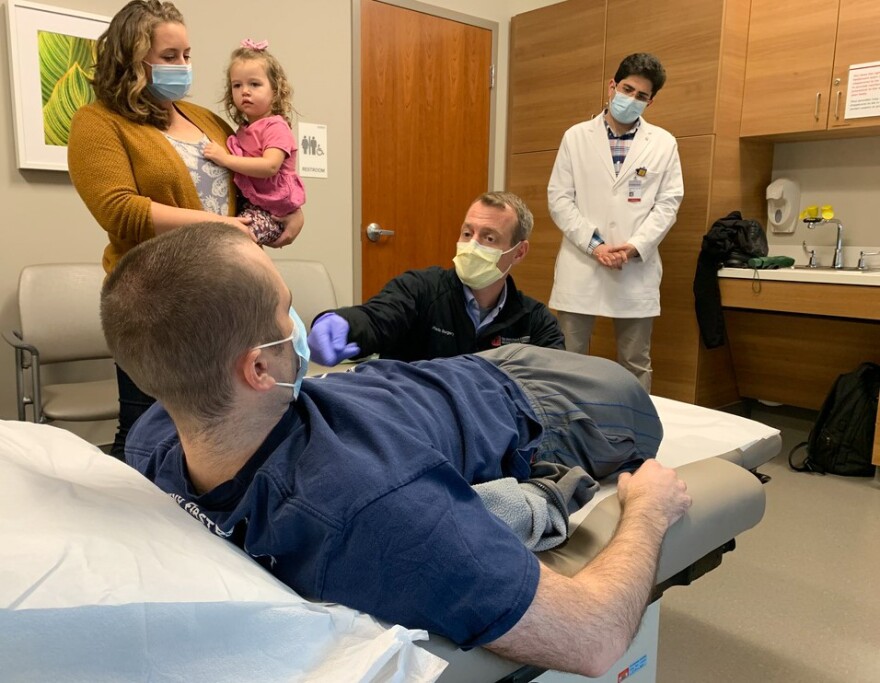Veteran Nick Vogt lost both legs after an IED exploded in Afghanistan while he was leading his platoon in 2011. Through a new at Ohio State University’s Wexner Medical Center, Vogt got the surgery to improve his life.
Dr. Jason Souza, who began caring for military veteran patients at OSU in September, performed a 12-hour surgery that removed a flap of skin from Vogt’s back, along with layers of fat and the vessels underneath, and placed them under his pelvis for padding. Vogt can now sit up and enjoy meals with his family.
“This program is specifically intended to identify those needs and then leverage the capabilities that already exist at a place like Ohio State and the James Cancer Center to meet the needs,” said Dr. Souza, director of the Orthoplastic Reconstruction Program at OSU’s Wexner Medical Center.
Souza said 7 out of 10 wounded warriors report pain that significantly or moderately impairs their quality of life.
At Ohio State’s Military Medicine Program physicians work on nerve-related pain.
One procedure is called targeted muscle reinnervation.
“It's a strategy that’s intended to deal with nerves that have been cut or injured and to rewire them in order to give that nerve somewhere to go and something to do,” said Souza.
Other strategies, Souza said involve decompressing nerves where they’re pinched or using other topical strategies or interventional strategies in the form of stimulation to distract the patient from their pain.
Souza said too many patients have given up on getting pain relief, and these new strategies provide hope.
Souza also said what sets combat injuries apart from civilian ones are the number of limbs injured and the extent to which they’re injured.
“Now we have two decades worth of conflict that have produced combat-injured service members who whilst having survived their initial injury are faced with long-standing challenges,” Souza said. “Whether it be challenges with pain or challenges with functional limitations.”
Souza said Ohio State was a desirable setting to set up the program.
“At Ohio State Wexner Medical Center there’s almost 500 active-duty reservists or veteran physicians and nurses,” Souza said. “At the university, there are 2300 service-connected students. And Ohio has the 4th largest veteran population in the United States.”
Research grants from the U.S. Department of Defense and other federal agencies are supporting the military medicine program. It’s hoped that more providers will become educated on ways to help those injured in combat.



